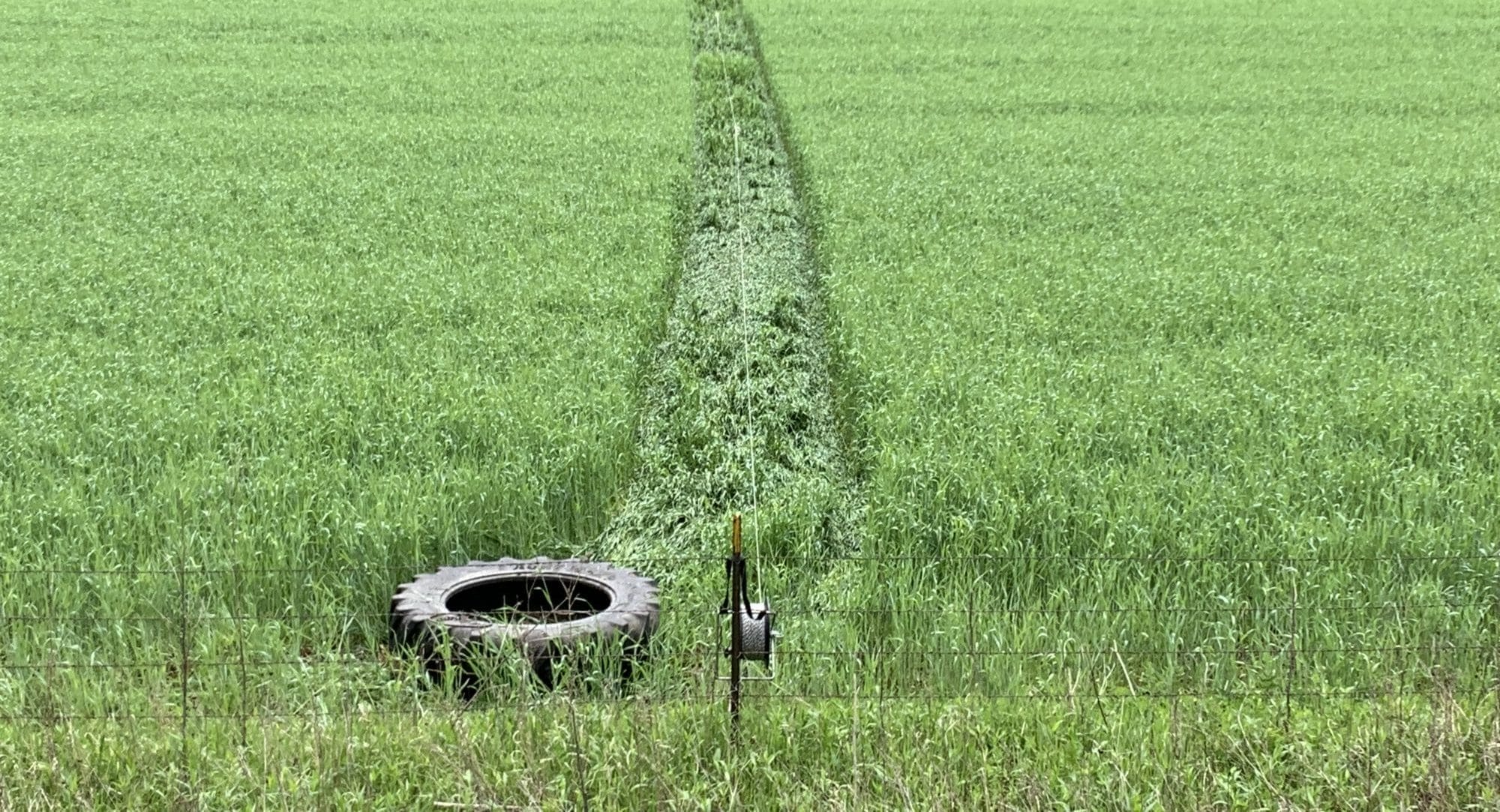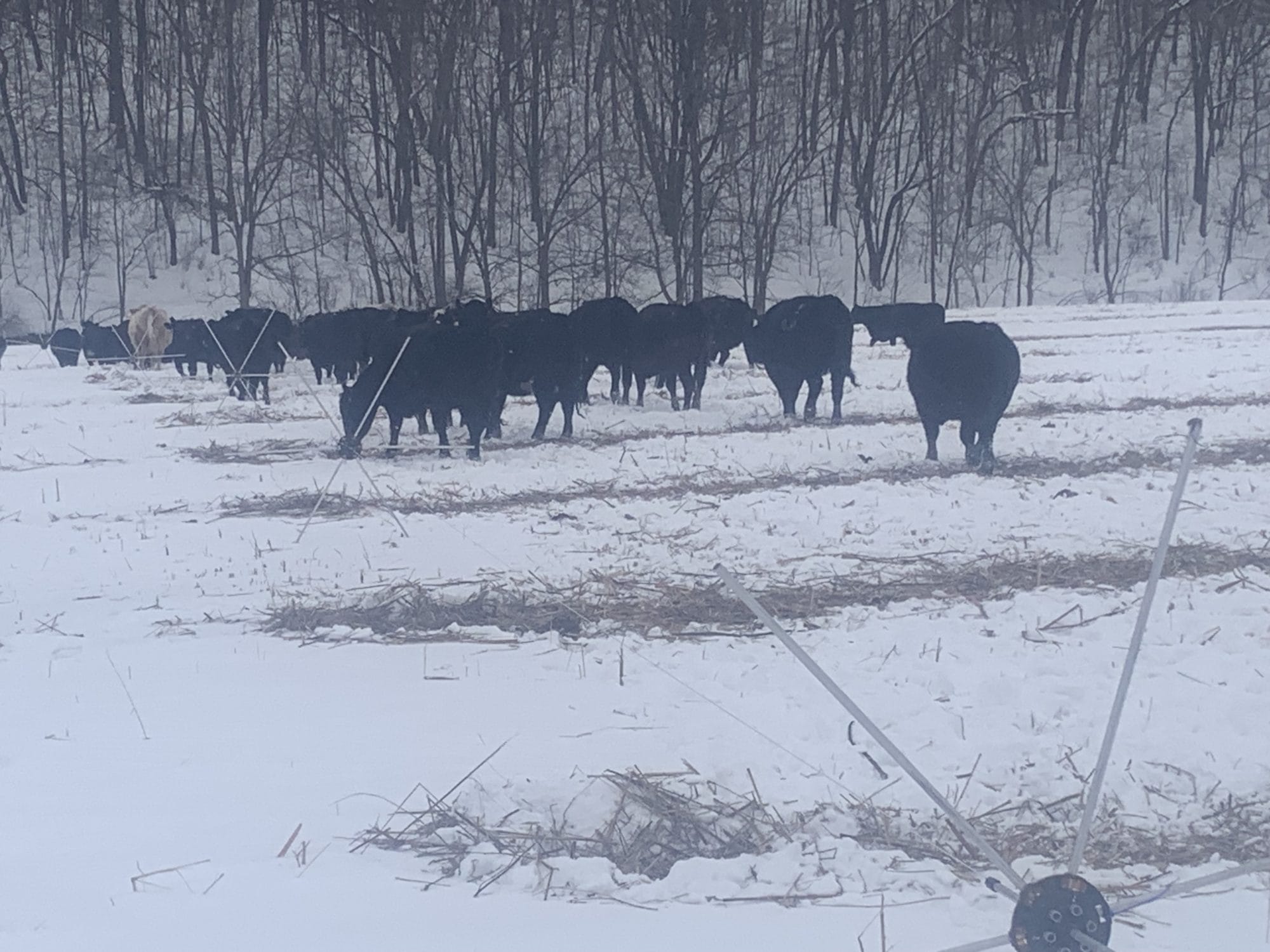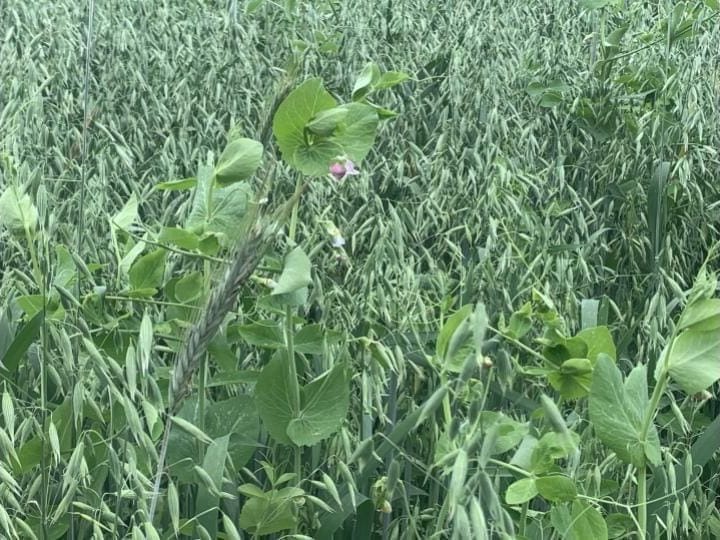How to Build Soil Health With Small Grains, Livestock and Cover Crops
Small grains and livestock go hand in hand. Not only do the grains offer nutritious feed for animals, but the two also work together to build diversity in the soil – of roots, microbes and nutrients.
Increasing that diversity is one of the soil health principles that livestock and row crop farmer Rick Matt abides by to improve resilience on his farm. His soil health journey spans decades, beginning with a transition to no-till in 1993, the addition of single-species cover crops in 1996, adding another species in 2000, and embracing a robust array of small grains and cover crop species after reading Gabe Brown’s “Dirt to Soil” in 2019.
Rick’s farm, Varykino, is in the rolling hills of the Driftless Area in northeast Iowa, near the small town of Castalia. His farm’s primary enterprise is beef cattle, but he also has pigs, chickens and sheep, as well as corn, rye, forage mixes and cover crops.
His core crop rotation is corn followed by a before planting a cover crop mix in late May or early June. In some fields, Rick seeds vetch along with his rye and takes it all to harvest, cleaning the seeds together and then using as cover crop seed for the next year.

In preparation for grazing his cover crop rye, Rick drags a tire through the field to lay down the plants in a line to be able to run electric fencing and create a paddock. Photo courtesy of Rick Matt.
Rick also plants oats and peas in some fields. “We’re putting that everywhere now that we do spring seeding. We bale some, we chop some, and we graze some.” He hopes to begin adding more oats to feed his sheep, a recent addition to the farm operation.
List of ingredients: What cover crops bring to the table

Rick shows off the rhizobial nodules forming on the roots of a Sunn hemp plant. Photo courtesy of Rick Matt.
Rick refers to his summer annual cover crop mix as salad because it offers a variety of species to the cattle. “I like a salad with arugula and mushrooms and carrots and tomatoes and everything on it. I don’t just like iceberg lettuce, so I’m feeding my cattle salad.” A multitude of species – now up to 18 – also contribute to Rick’s soil health improvement efforts.
Each species holds a different benefit, some for the soil and some for the cattle. Sunn hemp produces nodules that fix nitrogen into a useable form for other plants. “We’ve had different people come out and dig to look for the nodules. Some say they get as big as tennis balls, and we haven’t found that yet, but we have seen them look like clusters of grapes.”
Cows love turnips, which also break compaction. Radishes scavenge sulfur and other nutrients from the soil. Millets outcompete foxtail, one of the most prevalent weeds on Rick’s farm. Buckwheat and sunflowers attract pollinators and contribute to root biomass.
The diversity of roots and nutrients in the soil increases the prevalence of fungal and microbial life. Rick believes, “Mycorrhizal fungi are the key to it all and the small grains actually promote its growth.” By covering the soil through the winter and making space for a summer cover crop mix, small grains transform both the crop rotation and the health of the field.

The second year of Rick’s multispecies summer cover crop mix saw a significant increase in biomass from the first year, reaching about six feet tall as compared to three feet the previous year. Photo courtesy of Rick Matt.
Rotationally grazing with cover crops and perennial pasture
Cattle graze rotationally through Rick’s fields, with the help of electric fencing. The average paddock size is about two acres, and he aims to move the cattle through to a new paddock each day. His stocking density varies, but he pays close attention to how quickly the plants are grazed down and moves the herd accordingly to avoid overgrazing.
The most prevalent fencing method on the farm is electric wire strung through curlicue stakes that allow him to grab and move hot wire without personally touching it. This fencing doesn’t always work perfectly though, and Rick notes that his sunflowers sometimes get so tall that they lean over and pull down the electric fencing with them! Rick also uses honeycomb fencing called “tumblewheels” that each have six aluminum legs with a hot wire strung through the middle.

Rick uses tumblewheel fencing on flat ground. The fencing wire can be moved by simply rolling it but isn’t functional on hilly terrain because of its propensity to roll. Photo courtesy of Rick Matt.
Timing the grazing just right can be tricky. Rick aims to graze his rye cover crop when it is about one foot tall. “It’s six inches for forever and then all of a sudden, it’s a foot tall, and we start grazing it. A few days later, it’s booted and putting the head out.” He grazes as much as he can before maturity, but once the plants have headed out, they are not as palatable for the cattle.
Fortunately, Rick can graze his summer annual cover crop for a longer period, through August and September. It conveniently gives his cattle something to eat during the “summer slump” when the perennial crop is needing rest to regrow. Those couple of months will allow enough growth for the cattle to return to the perennial pasture later in the fall.
Playing the long game
Rick recognizes that small grains may not make as much money in the short-term as growing only corn and soybeans. But with his cattle and the health of the soil in mind, he has found that adding small grains holds significant benefits. “We don’t look at it as if we’re after every last dime on the ground. We look at it as we’re putting something back in the soil and building that long term resiliency.”
For More Information on Small Grains and Extended Rotation:
- Sign up for PFI’s monthly Small Grains News email newsletter.
- 2022 blog post: “Observations on Summer Cover Crops, Small Grains and Grazing Covers”
- Practical Cover Croppers video: “Summer Cover Crops for Winter Grazing Cattle”
- 2016 research report: “Summer Annual Forage Established After Cereal Rye + Hairy Vetch Cover Crop”

